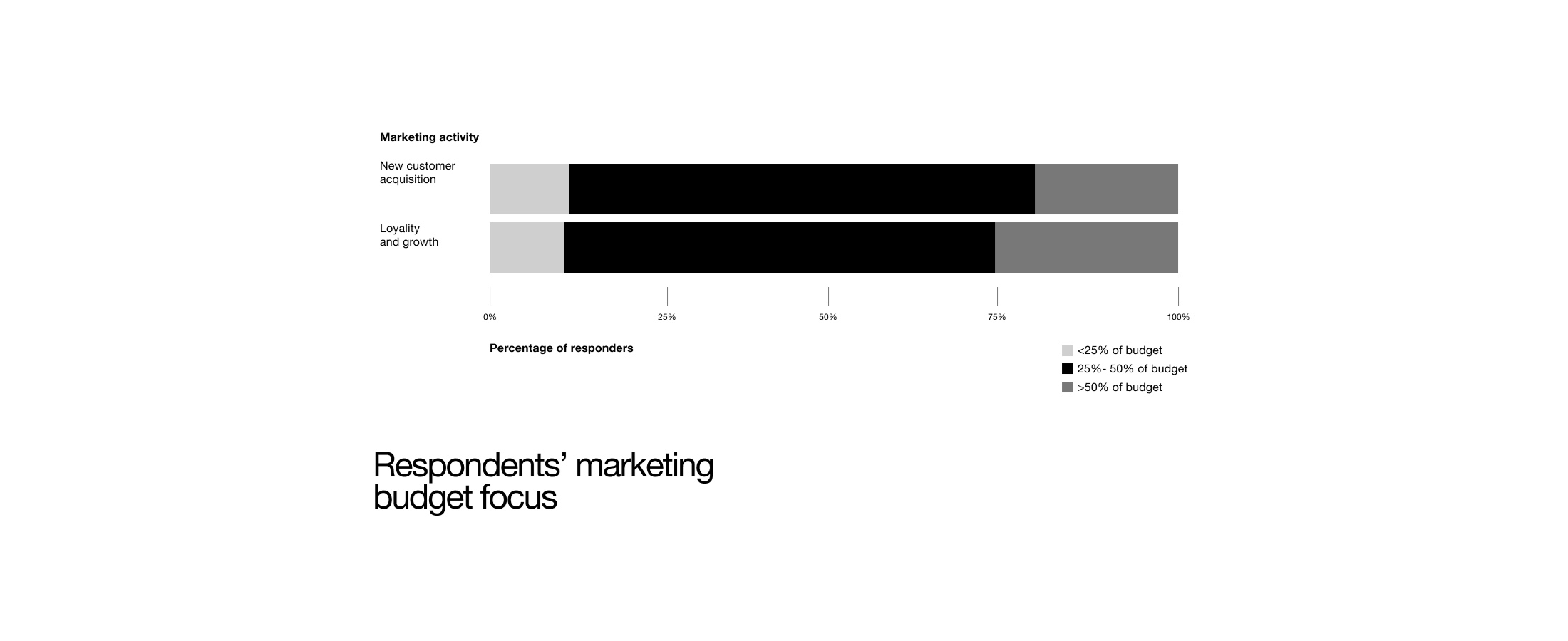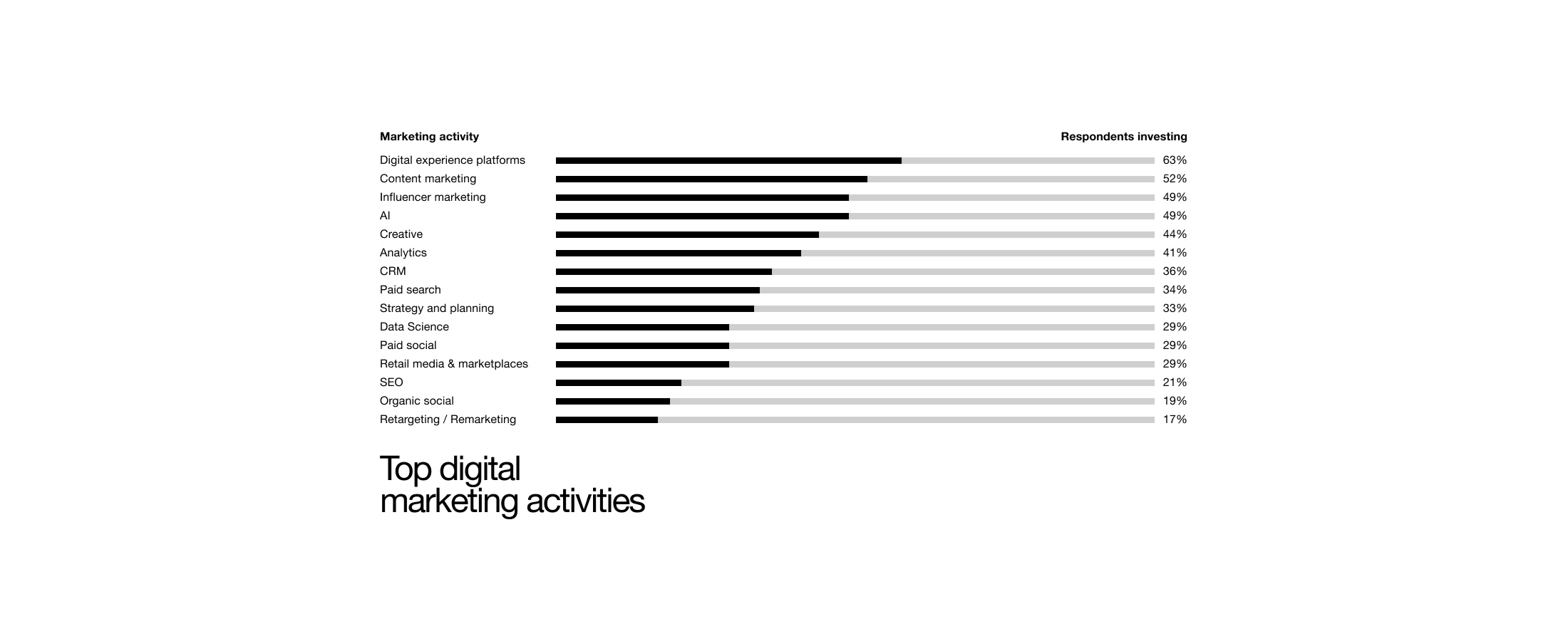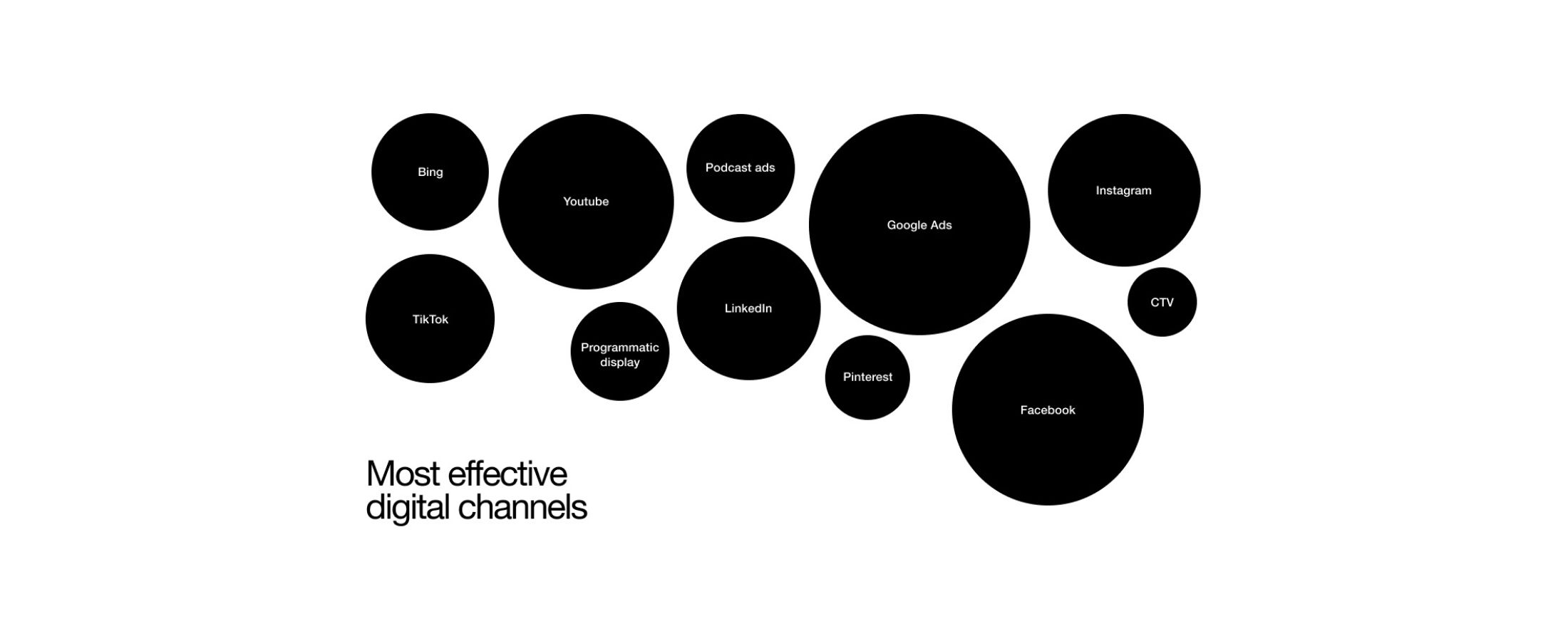We surveyed 500 marketing leaders. Here are their top investments in digital
Today’s digital marketing environment is fraught with complexities and changes that demand brands demonstrate agility and foresight.
From AI transformation to macroeconomic pressures, external factors are shaping the strategies and decisions of marketing leaders worldwide.

An increased emphasis on customer loyalty tactics
As the marketing landscape grows increasingly complex, so does the challenge of acquiring new customers. Our survey indicates a significant shift in strategy, with many brands pivoting from aggressive customer acquisition efforts to a stronger emphasis on customer loyalty and retention.
According to our survey, 64% of brands are investing heavily in loyalty rewards programs, while 62% are focusing on personalized email campaigns. Additionally, 54% of respondents are enhancing their customer service efforts to build and maintain strong relationships with existing customers.
This shift can be attributed to several factors, including rising costs associated with customer acquisition and a more competitive marketplace. With cost-per-click (CPC) rates and cost-per-acquisition (CPA) metrics climbing, it’s more cost-effective to focus on retaining existing customers rather than acquiring new ones.
Additionally, privacy concerns and the phasing out of third-party cookies make digital advertising and data collection more convoluted, prompting marketers to prioritize and nurture known customer profiles over investing in unknown prospects.

Brands are leaning more heavily into retention strategies due to the increasing complexity and cost of acquiring new customers
This is not merely a defensive move; it reflects a strategic decision to build deeper, more meaningful relationships with customers who already know and trust their brand.
Retaining an existing customer is often more cost-effective than acquiring a new one. By focusing on loyalty, brands can increase customer lifetime value and foster a community of brand advocates who can help drive word-of-mouth marketing.
To stand out in a crowded loyalty space, brands must innovate their approach to customer retention. This includes leveraging advanced data analytics to understand customer behavior better, personalizing communication and offers, and ensuring exceptional customer experiences at every touchpoint. Building a robust loyalty program that rewards not just purchases but engagement can create a more dynamic and valuable customer relationship.
Enhance your loyalty programs by incorporating personalized rewards, exclusive content, and unique experiences that cater to your most valuable customers. Utilise data-driven insights to identify what motivates your customers and tailor your programs accordingly.
– Dowoo Lee, VP, Integrated Media Strategy & Planning
Investments in AI
The hottest buzzword and topic of internet debate, artificial intelligence continues to be a focal point for many marketing teams—and with a notable increase in investment this year. The focus has primarily been on GenAI for content and creative production, which for many brands is the most immediately available and applicable use case of the technology.
Our survey found that 78% of marketing teams plan to upgrade or enhance their AI capabilities this year. Of these, 76% are investing in GenAI, followed by 51% in creative production and 46% in data science.
While interest in AI is undeniable, many brands are still in the early discovery and education stages of adoption. According to eMarketer, a majority of marketers recognize AI’s potential but are lagging in full-scale adoption due to concerns over cost, integration, and expertise. The potential of AI to streamline operations, enhance personalization, and drive creative innovation is clear, but practical implementation remains a challenge.

Brands recognize the value of AI and are eager to integrate it into their operations, but they are cautious about adopting it.
This caution is understandable given the rapid evolution of AI technologies and the need for substantial investment in both technology and talent.
For brands looking to harness the power of AI, a pragmatic approach is essential. While the potential of AI is vast, a gradual and measured approach to its adoption allows brands to mitigate risks, manage costs, and build internal capabilities without overwhelming their teams or resources.
Start by integrating AI tools within existing platforms to minimize costs and maximize familiarity. Focus on use cases that offer immediate, tangible benefits, such as automating repetitive tasks or enhancing personalization. Experiment with AI in controlled environments to build confidence and understanding before scaling up. And consider partnering with AI specialists or platforms that can provide a tailored solution that aligns with your specific needs.
– Sam Huston, SVP Creative & Media

The increasing importance of content & creative
As algorithms and automation increasingly dominate many marketing processes, unique and personalized content and creative are becoming key differentiators. Producing engaging, high-quality, and distinctly human content is more important than ever.
This year, we saw a noticeable increase in investments in Digital Experience Platforms (DXPs), content marketing, influencer marketing, and AI-driven creative production.
In contrast, more traditional strategies like programmatic advertising, conversion rate optimization (CRO), retargeting, and organic social media are seeing reduced investment due to their diminishing effectiveness in the face of privacy changes and the deprecation of cookies.
The shift towards content and creative investments underscores the need for brands to forge stronger emotional connections with their audiences. As the effectiveness of targeting through cookies and other third-party data declines, marketers are focusing on creating compelling content and digital experiences that engage users directly and build long-term brand loyalty.

Increasing focus on content and creative reflects a broader recognition that brand experiences are essential for cutting through the noise.
Brands are opting to invest in the elements they can control directly, such as storytelling, creative execution, and personalised experiences. High-quality, relevant content can enhance brand perception and foster loyalty, while also providing SEO benefits.
Continue to prioritize content quality and creative innovation over quantity. Investing in a robust content strategy that leverages diverse formats—video, infographics, interactive content, etc.—can help maintain audience interest and engagement. Additionally, leverage influencers and user-generated content to provide authenticity and enhance brand trust.
– Molly Deaville, Growth Director

Digital channels: What’s working best
Brands are doubling down on digital channels that have consistently delivered strong results, giving less time, attention, and money to newer or less proven ones.
According to our survey respondents, this year’s most effective digital channels are Google Ads, Facebook, YouTube, Instagram, and LinkedIn. On the other hand, many respondents deemed channels, including programmatic display, TikTok, podcast ads, and connected TV (CTV), less effective.
In times marked by economic instability, brands are less willing to experiment with emerging or less predictable channels. Instead, they’re understandably focusing on platforms where they’ve seen historical success, have built established audience bases, and can feel confident about ROI.

The reliance on tried-and-true channels reflects a cautious approach to digital spending, driven by a desire to maximize return on investment amidst economic uncertainty.
However, this strategy could limit opportunities for growth and engagement with new audiences.
While investing in reliable channels is essential, brands should also consider experimenting with emerging platforms to diversify their digital strategy. Testing new channels on a small scale can provide insights into their potential without risking significant budget allocations. Additionally, optimizing current channels for better performance through advanced targeting and personalized content can enhance ROI further.
– Courtney Pierce, VP Demand Generation
Exploring new channels, refining AI strategies, and optimizing across the full funnel are essential steps to remain competitive and adaptable.
What’s next in digital marketing?
Brands are shifting from aggressive new customer acquisition to enhancing customer loyalty and retention, driven by rising acquisition costs and the need for more predictable ROI.
Companies are keen to invest in AI, but many lack the resources and skills to integrate it effectively and strategically. And a strong emphasis on authentic, audience-focused content and proven digital channels reflects a desire to connect more deeply with existing audiences amidst evolving privacy concerns and economic uncertainties.
In the short term, these trends suggest a slowdown in new customer growth for brands heavily focused on retention and cautious spending. But to build a robust marketing pipeline that supports long-term growth, businesses must balance these cost-cutting measures with some degree of experimentation. Exploring new channels, refining AI strategies, and optimizing across the full funnel are essential steps to remain competitive and adaptable.
As we move forward into 2025, the key to success lies in the balance of embracing innovation while staying true to proven principles of customer engagement and loyalty. With the right strategy and support, marketing teams can thrive amidst uncertainty and drive sustainable growth well into the future—achieving both immediate results and long-term business objectives.





